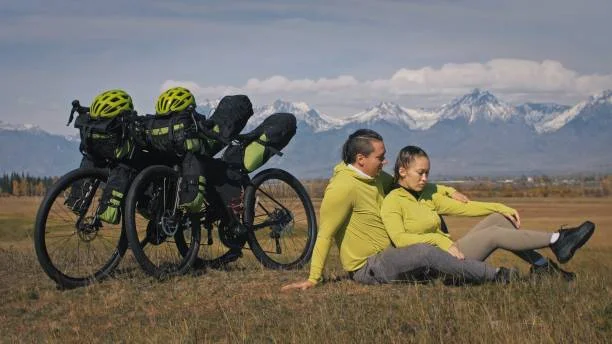The activewear segment is bustling with growth. Aesthetics play a prominent role in the material choice of consumers. As such, there is a significant demand for fashionable and functional clothes which again equals a tremendous opportunity for both upstream and brand affiliate companies. However, the transition from an idea to a tangible product is no longer just a snap of your fingers. It is a rough ride that spans several roller coaster rides.
This guide will act as a beacon in the dark, illuminating the often-complicated and sometimes-daunting activewear clothing production process. We will detail each step, from the initial design to the final product, what to expect, and what you will learn in a sportswear clothing manufacturer. This knowledge will help you build a successful sportswear brand with ease.
The New Wave of Sportswear
With the modern age, sportswear has become more than just training material. It can now be perceived as an additional fashion accessory. This is seen mostly in new lifestyle trends like athleisure that denote how people dress in both casual and sporty wear. The activewear is not only used during fitness training but also for errands, and dining outdoors. It also symbolizes lifestyle choices and environmental awareness.
Customers now want their clothes to not only perform but also be built of specific fabrics. These are fabrics that keep them dry and remain with their fit. They are also looking for more sustainable choices. The preference is not just eco-friendly materials but also the way their clothing is produced by the brands. The use of green materials along with ethical practices carries more weight for the new generation buyers.
The potential here is enormous. The worldwide activewear market was reported to be worth USD 320.91 billion in 2024. The only way to be ahead in the competition is to have an in-depth understanding of how activewear is made.
Take a deeper dive—this piece uncovers more angles.
The Steps to Manufacturing: From an Idea to a Full Collection
The activewear industry is no rocket science to make it, as long as you follow logical steps. The best way to navigate this path is to work with an experienced sportswear clothing manufacturer. Let us take you through the path that leads from a simple design idea to a full collection.
Step 1: Design & The All-Important Technical Pack
Every project begins with the design. Yet a mere drawing does not suffice. You need a tech pack. A tech pack provides a complete picture of your product. It is an instruction manual for the maker that highlights everything they need to know.
Making a tech pack detailed and comprehensive entails:
- Providing technical drawings of the garment.
- Detailing the measurements for all sizes.
- Giving information about fabrics and the material composition.
- Mentioning the color codes (like Pantone colors).
- Advising on the trims like the zippers and buttons that are used.
- Giving instructions on labels and tag placement.
- Adding the required stitches and types of seams.
The technical pack is the essential part of an activewear production where it smoothens the project by preventing mistakes and saving time.
Step 2: Sourcing the Right Performance Fabrics
The fabric is what defines sportswear. The material you choose will either increase or reduce the wearer’s comfort, performance, and longevity of the garment. Besides being the one to blame, it is also a sportswear clothing manufacturer that can guide you in the right direction.
Essential fabric features to evaluate are:
- Moisture-wicking: It keeps sweat away from the skin and prevents wetness.
- Four-way stretch: It gives the body the freedom of movement.
- Compression: This one provides muscular support and it also helps improve blood circulation.
- Anti-odor: It is effective against bacteria responsible for odors.
- Green options: The user can utilize materials like recycled polyester, recycled nylon, and TENCEL™ that are good for the environment.
Step 3: The Crucial Sampling & Prototyping Stage
It is the first time your idea has a physical semblance. The sampling stage is the most pivotal period of a project since it sets the right fit and function of the garment right. Skimping on this step would hurt you badly in the end.
This process generally unfolds as:
- The factory makes a “first fit” sample based on the tech pack.
- You get the sample and try it.
- You provide thoughtful feedback with pictures or notes.
- The factory corrects the sample according to your remarks.
5. The above procedure is followed until you approve of a “pre-production” sample.
In fact, this last sample is the touchstone for all your production runs.
Step 4: Scaling Up: Full-Scale Activewear Production
When you confirm the last sample, manufacturers can shift to mass production. This is an elaborate and delicate process.
First, the factory orders all the fabric and trims in bulk which they need. Then, huge sheets of fabric are cut and folded using a computer. Finally, the factory attaches the pieces together. The workers, who are the backbone of the process, assemble the different components of each piece. Flatlock seams are used because they are durable and chafe-proof.
Step 5: Quality Control (QC) & Final Delivery
Quality control is the frame that upholds the reputation of your brand. There are many points during the activewear production at which QC is performed.
Line inspections are done while the garments are being constructed. This is a great help to avoid problems beforehand. A follow-up inspection is done on the whole batch once the production is finished. The inspectors check for any defects, measure to ensure correctness, and check the consistency in workmanship. All items are packed and sent to you after they have cleared the final QC checks.
Choosing Your Partner: How to Assess a Sportswear Clothing Manufacturer
Making the right choice of a factory will be the one-leg of a walk to your future success. Your factory not only is the one to produce your design but also will be a partner in your success. Here are some things to look at when deciding whether to work with a given sportswear clothing manufacturer or not.
Technical Capabilities and Specialization
Is the factory specializing in performance wear? Inquire if they are capable of advanced technical fabrics and methods handling. Look for knowledge of seamless knitting, bonding, or laser-cutting. An activewear manufacturer will be in a better position to cater to your needs than a general clothing factory because they will be more familiar with the industry.
Communication and Project Management
Transparency and regular communication are the most important of the project management parameters. Is there a single contact person? Is he/she responsive to emails and questions? A good partner is not just a follower, they will also be proactive. They will provide you with timely updates and ask questions for clarification to minimize mistakes.
Ethical Standards and Sustainability Certifications
Today, more than ever before, buyers are inquiring about the origins of the products they purchase. Ask the potential manufacturers about their ethical standards and certifications. The first approach is seeking out the OEKO-TEX® certification. This confirms that the textiles are clean from harmful substances. Other important certifications are the Global Recycled Standard (GRS) and Fair Trade. Many leading Sports clothing manufacturers have adopted an ethical practice and have the documents to prove it.
Minimum Order Quantities (MOQs) and Scalability
MOQs are the minimum number of units a factory will run for each style. This is a decisive parameter for startups. Is the factory able to launch with a low quantity order? As a matter of principle do they have an idea of scaling? You need a partner who is capable of increasing production along with your success. It is vital to find the right sportswear clothing manufacturer that is not only necessarily good at the quality but fights for ethics as well. Such a partnership will eventually make both companies thrive.
Behind the Seams: Typical Errors and How to Evade Them
From our experience, we have seen brands often running into complaints and errors. Being aware of these common pitfalls can potentially save you lots of time and money. Below is a comprehensive review of some of the errors to avoid.
- Ambiguous Tech Packs. A tech pack that is less than detailed is a perfect storm of problems. It results in wrong samples and production mistakes.
- Solution: It is always best to err on the side of over-detailed. Provide every measurement, every stitch, every specification of the trim. Leave no room for error.
- Rushing the Sampling Process. Some brands treat sampling like a simple checkbox to tick before production. This is a huge mistake.
- Solution: Treat sampling as a vital part of development. Test your samples in real-world conditions. Wear them, wash them, and have others test them too.
- Ignoring Cultural & Time Zone Differences. When working with overseas partners, communication can be challenging.
- Solution: Set clear expectations from the start. Agree on response times and a regular schedule for updates. Be patient and clear in your communication.
Conclusion: Building a Lasting Partnership
Incorporating a sportswear collection is a fulfilling experience. It starts with a creative concept and includes a product that you can be proud of. Not only adherence to set protocols, but having a clear roadmap for every stage will help.
The first step in getting it all right is to select the right sportswear clothing manufacturer. They are not just the ones supplying the materials. They are a partner whose priority is your growth. A reliable manufacturer can bring you the technical know-how and manufacture quality products and also support you in the complex journey of activewear production. A dedicated partner like Chenglin Clothing can transform a brand’s vision into a high-quality reality. With a well-oriented team, your company can have plans that are well-structured and achieve goals that are well-delivered.
Frequently Asked Questions (FAQ)
What is a common MOQ for custom sportswear?
Minimum Order Quantities, or MOQs, are certainly the predominant yardstick the factories will use when you are getting the prices. Lesser, specialized manufacturers may offer a MOQ of 200-500 for each design or color. Larger producers servicing big brands may require a minimum order of 1000 or above. Always remember to ask about the minimum order quantity first when you are new to manufacturings.
How long is the manufacturing process?
Generally, the period from design to delivery takes around 4-6 months. Typically, this can be broken down to 1-2 months for design, fabric sourcing, and sampling. The mass production and shipping will take another 2-4 months. The final timeline may differ depending on the complexity of the product and the factory’s schedule.
How differ tech pack and design sketch from each other?
A sketch is really just a picture of your intended creation that is meant to be a guide. A tech pack is a thorough technical document that serves as a blueprint. It consists of the sketch but also all the details that the factory requires for production. Such details include the exact measurements, types of fabric, stitch instructions, color codes, and trim information. No manufacturer will work without a tech pack that is detail-oriented.
What are the ways of assuring quality in my activewear?
Implement different quality checkpoints. Initially, allow pre-production samples to be approved before going into mass production. That sample is the norm. Ask for in-line reports during production to catch issues early as well. Finally, conduct a final inspection before the goods are shipped. You can do this either on your own or you can hire a third-party inspection service to do this for you.
Do manufacturers play a role in sourcing sustainable fabrics?
Definitely, an experienced sportswear clothing manufacturer should have a network of reliable fabric vendors. In fact, the best activewear manufacturers are usually proactive for sustainability. They are the ones who will pitch the ideas of Materials such as recycled polyester (rPET), recycled nylon, and organic cotta. This, in turn, helps your brand meet consumer demands.
If you enjoyed this post, you’ll love what’s featured on 2A Magazine.







